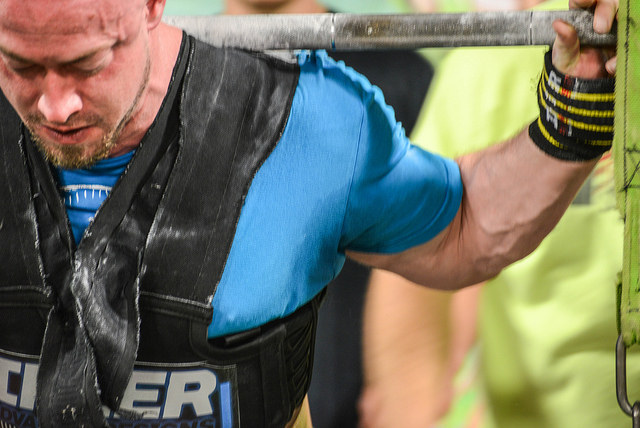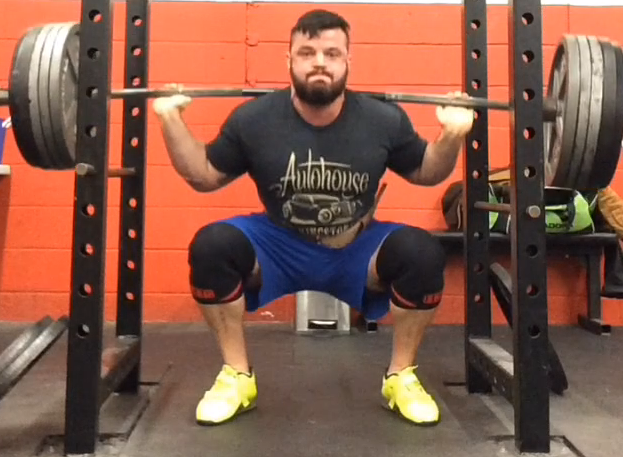
26 Feb Developing YOUR Plan
By: Paul Oneid
One of the biggest mistakes that young lifters make is hopping from training program to training program without allowing their bodies to reap the benefits of consistent exposure to a stimulus. The young lifter will typically think: “Man, I have been training hard for 4 weeks, let’s see where I am at.” They will test their maxes frequently and they will likely PR because of their young training age. This short-term gain will positively reinforce the behavior. The behavior will continue until the results slow down or stop. Then, the lifter will either get frustrated and quit or get hurt. One of the most difficult things that a good coach will teach a young lifter is that lifting submaximal loads over a long period of time in order to build strength will yield greater results than constantly testing. You learn the material for the test. You don’t get smarter by taking it. (You can argue that the stimulus provided by a maximal attempt provides a measure of adaption but this adaption is not one that can be elicited consistently over time, especially in powerlifting, so STFU).
[wa-wps]How do you develop your plan? How do you find a training program that is right for you?
Know Yourself
As a lifter you must know who you are. You may be a very technical and skilled lifter, but you move weights like you’re swimming in molasses. You may be an extremely explosive lifter, but lack technical proficiency. Whatever type of lifter you are, there is a direction you need to take to get you to your ultimate goal. You also need to know where your weaknesses lie in each lift. Based on the area where you miss lifts, you will know what areas need the most focus. If you do not know yourself, you may as well quit before you start chasing anything worthwhile because you won’t get there. The only way to progress as a lifter is to attack your weaknesses head on.
Be Honest and Open
Besides not learning your body and learning where you need work, the quickest way to fail is to believe you have all the answers. Newsflash – YOU DON’T. No one has all the answers. Brian Carroll seeks help from Paul Key for his bench press. I seek help from Scott Paltos for my diet. We all seek assistance from those who are able to provide the necessary tools that we need. By remaining closed off to advice and criticism, you will likely not actively address deficiencies in your game. There are always improvements to be made. That is why the all-time records continue to go up.
Attack Weak Points
Once you know yourself and you are open with your deficiencies, the only thing that you should be concerned with is attacking those weaknesses and turning them into strengths. It has been beaten to death that you need to do that which you suck at. Progress can be made while doing only what you’re good at. I will be honest, that is what I did for a long time. Someone with an 800lbs squat and a 700lbs deadlift can add more poundage to their total by addressing the deadlift. It’s easier to get the deadlift to 750lbs, than the squat to 810lbs. Plus, the added work on the deadlift will likely improve the squat, anyway! The ultimate goal of any lifter is to maximize their potential on all the lifts and build the biggest total possible. How do you attack weak points? The exercise index in 10/20/Life is a great place to start. Modifying your training to include specific movements and modalities that are specific to your needs is key.
Focus On Building, Not Testing
The more training you can tolerate, the more progress you can make. I will rephrase – the more training you can recover from, the more progress you can make. Training with submaximal percentages is easier on the central nervous system than maximal percentages. More training volume can be tolerated between 60-75% than 80%+. The majority of training, with the exception of meet prep should take place within these percentage ranges. This is where you put on muscle mass, refine technique, improve work capacity and build up weaknesses. If, by the end of an off-season, I can move 70% with the same efficiency and volume as I used to move 60%, I know I have made improvements. There is no need to test my max because I know it went up! Slow and steady wins the race.
Stick To The Plan
Consistency of effort is paramount to success. In the grand scheme of things, if you have a plan and you put all of your effort into that plan, you will make progress. The smarter the plan, the more progress. Jumping from coach to coach, or program to program will not lead to long-term progress. You must be patient and allow time for the body to adapt to the training stimulus. The best lifters are the ones who have made slow and calculated progress over time. Building your total over the years, staying injury free and enjoying every step of the process is what creates a champion. Just because something looks fun, or hard, or exciting, doesn’t mean it will make you better in the long term. Strength for a lifetime is the goal, not to be a flash in the pan that never achieved his/her true potential.
Knowing your needs and being honest with your weaknesses will allow you to develop a specific plan to attack your weaknesses. Take your time and build up your body and your lifts over the course of the off-season. Be consistent in your effort and stick to the plan. Patience and a calculated approach will never fail you! Do not fall for the fanfare and pizazz. Find YOUR plan.
Paul Oneid
Latest posts by Paul Oneid (see all)
- A Proposition for a Paradigm of Planning Your Personal Periodization - March 4, 2019
- Paul Oneid –> Off-Season | Feet Up Bench PR and Some Squats - March 1, 2019
- Paul Oneid –> Off-Season | A bit of everything - February 21, 2019






Sorry, the comment form is closed at this time.